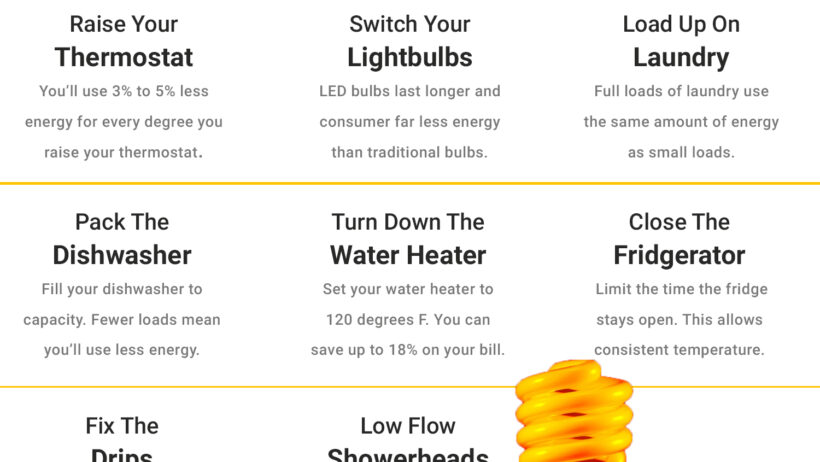Energy conservation has become an imperative need in today’s world, given the pressing concerns surrounding climate change and resource depletion. Implementing energy-saving measures at home and in the workplace not only contributes to a more sustainable future but also results in significant cost savings. Here are various strategies to conserve energy across different domains.
Firstly, understanding the appliances and devices commonly used in homes and workplaces can lay the groundwork for more informed choices. Energy-efficient appliances, such as those rated with the ENERGY STAR label, consume less electricity and water. When replacing old machines, consider those that utilize energy in a more sustainable manner. Moreover, maintaining these devices regularly—like cleaning filters in air conditioners or defrosting freezers—ensures they operate at peak efficiency, minimizing unnecessary energy draw.
Lighting represents a considerable portion of energy consumption. Transitioning to LED lighting is one of the simplest yet most effective strategies for energy conservation. LEDs consume up to 75% less energy than traditional incandescent bulbs and possess a longer lifespan, reducing frequency and expense of replacements. Furthermore, maximizing natural light can significantly decrease reliance on artificial lighting. Trim surrounding foliage and reposition mirrors to reflect sunlight into darker spaces; this will enhance brightness during daylight hours.
Heating and cooling systems are another critical area where energy can be conserved significantly. Programmable or smart thermostats enable users to regulate temperature settings efficiently, ensuring heating or cooling isn’t wasted when spaces are unoccupied. Sealing significant gaps or cracks in windows and doors can prevent drafts. Employing curtains or blinds can also ameliorate energy loss, as they serve as thermal barriers, trapping heat in during winter and reflecting it out during summer.
Additionally, insulative practices are vital. Proper insulation of walls, attics, and basements can dramatically decrease energy requirements for heating and cooling. Invest in high-quality insulation materials that align with local climates to further boost efficacy. On a related note, a warm blanket instead of a thermostat elevation in colder months can not only save energy but provide comfortable coziness.
By scrutinizing our behavior and habits, even minor adjustments can yield substantial energy conservation. For instance, turning off lights when exiting a room and unplugging chargers and devices that are not in use can mitigate phantom loads—energy used by electronics when they are switched off but still plugged in. Employ power strips for multiple devices, enabling easy disconnection when they are not in active use.
In offices, encouraging a culture of energy consciousness among employees can lead to collective advancements in energy conservation. Implementing policies that advocate for energy-saving practices—like switching off equipment at the end of the day—can be beneficial. Consider arranging workspaces to utilize natural light, thus reducing dependence on overhead lighting. When purchasing office equipment, choose energy-efficient products, such as ENERGY STAR certified computers and printers.
Moreover, consider telecommuting options. Employees working from home not only curtail their energy expenditures in the office; they also contribute to a decrease in overall emissions resulting from commuting. By offering flexible work arrangements, companies foster a healthier work-life balance while simultaneously promoting energy conservation.
Encouraging the use of energy-efficient transportation options can also factor into energy conservation initiatives. Promoting carpooling, public transportation, cycling, or even walking can reduce the carbon footprint associated with commuting. Additionally, organizations can invest in electric vehicle charging stations to support employees who opt for electric vehicles, further illustrating commitment to sustainability.
Gardening and landscaping practices can also play a role in energy conservation. Strategically placing trees and shrubs around buildings can provide shade, reducing the need for air conditioning in summer. The establishment of green spaces, such as community gardens, contributes to better insulation and provides habitat for wildlife, enhancing biodiversity, which is intrinsically linked to the health of local ecosystems.
Investing in renewable energy sources is another commendable step toward energy conservation. While the initial investment may appear significant, the long-term benefits are undeniable. Solar panels, for example, not only lessen reliance on fossil fuel-generated power but also offer potential financial incentives through tax rebates and reduced energy bills over time. Those unable to invest in large-scale energy systems can still explore community-based renewable energy initiatives. Participating in local solar co-ops allows individuals to benefit from renewable energy collectively, sharing costs and resources.
Education and community involvement play crucial roles in promoting energy conservation. Engage with local initiatives or programs aimed at educating citizens about energy-saving practices. Hosting workshops or seminars can equip individuals with the knowledge needed to make informed decisions regarding energy usage in their households and workplaces. Awareness campaigns may further encourage the adoption of energy-efficient habits among families and communities.
Lastly, remember that energy conservation is an ongoing journey, not a destination. Continuously assessing energy consumption and looking for new ways to improve efficiency can help maintain a sustainable lifestyle. Empowering individuals to take proactive steps fosters a collective commitment toward combating climate change and conserving the planet’s vital resources.
In conclusion, the pursuit of energy conservation at home and work is not only achievable but also imperative. With a blend of practical strategies, educated choices, and community efforts, we can collectively foster a culture of sustainability that resonates well into the future.







